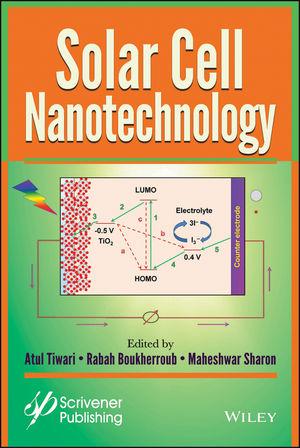Samalmaairgy (talk | contribs) |
m (Reverted edits by Samalmaairgy (talk) to last revision by J.M.Pearce) |
||
| Line 13: | Line 13: | ||
* [[Multi-resonant silver nano-disk patterned thin film hydrogenated amorphous silicon solar cells for Staebler-Wronski effect compensation]] | * [[Multi-resonant silver nano-disk patterned thin film hydrogenated amorphous silicon solar cells for Staebler-Wronski effect compensation]] | ||
* [[Effect of ambient combinations of argon, oxygen, and hydrogen on the properties of DC magnetron sputtered indium tin oxide films]] | * [[Effect of ambient combinations of argon, oxygen, and hydrogen on the properties of DC magnetron sputtered indium tin oxide films]] | ||
[[Category:MOST completed projects and publications]] | [[Category:MOST completed projects and publications]] | ||
Revision as of 18:36, 26 April 2015

Source
J. Gwamuri, D. Ö. Güney and J. M. Pearce, "Advances in Plasmonic Light Trapping in Thin-Film Solar Photovoltaic Devices", in Solar Cell Nanotechnology, Atul Tiwari (Editor), Rabah Boukherroub (Editor), Maheshwar Sharon (Editor), Wiley, ISBN: 978-1-118-68625-6 Preorder
Abstract
This chapter reviews the recent promising advances in the use of plasmonic nanostructures forming metamaterials to improve absorption of light in thin-film solar photovoltaic (PV) devices. Sophisticated light management in thin-film PV has become increasingly important to ensure absorption of the entire solar spectrum while reducing semiconductor absorber layer thicknesses, which reduces deposition time, material use, embodied energy and greenhouse gas emissions, and economic costs. Metal nanostructures have a strong interaction with light, which enables unprecedented control over the propagation and the trapping of light in the absorber layer of thin-film PV. The literature is reviewed for both theoretical and experimental work on multiple nanoscale geometries of plasmonic absorbers and PV materials. Finally, the use of nanostructures to improve light trapping in PV is outlined to guide development in the future.
See also
- Plasmonic Perfect Meta-Absobers for a-Si PV Devices
- Multi-resonant silver nano-disk patterned thin film hydrogenated amorphous silicon solar cells for Staebler-Wronski effect compensation
- Optical modelling of thin film microstructures literature review
- Multi-resonant silver nano-disk patterned thin film hydrogenated amorphous silicon solar cells for Staebler-Wronski effect compensation
- Effect of ambient combinations of argon, oxygen, and hydrogen on the properties of DC magnetron sputtered indium tin oxide films

